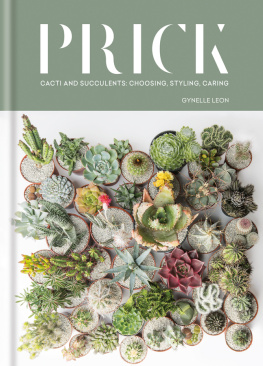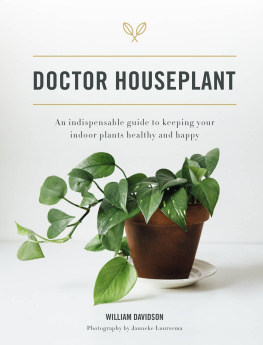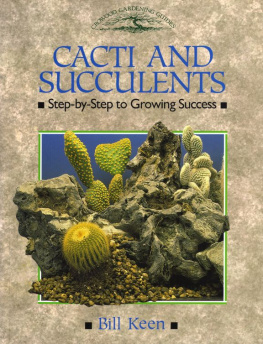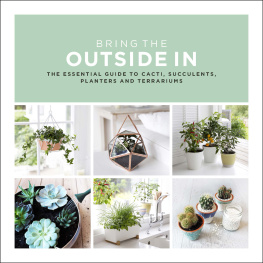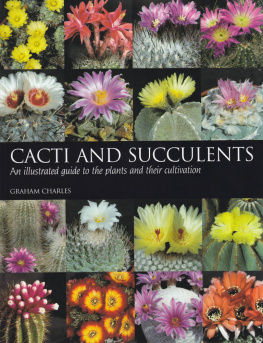Contents
Guide


In July 2016, I opened the doors to Prick, my boutique dedicated to cacti and other succulents. Based in Dalston, east London, the shop offers a selection of the most unusual and exotic succulent plants, sourced from countries around the world.
Im often asked why I limit myself to just cacti and succulents, and my answer is always, Why not? Once you start to explore their incredible diversity size, shape, flowers and character I feel that the question can answer itself. I am constantly amazed by their ability to survive the harshest environments, which makes them a beautiful symbol of endurance and strength.
Ive always seen cacti and succulents as living sculptures that take years to develop fully. They are an attractive and sustainable way to transform any interior, and due to their low maintenance and hardy nature, theyre well suited to modern city living.
Most people know very little about these wonderful plants, being familiar only with those theyve seen in Westerns or the limited range on sale at their local florist or garden centre, and are unaware of the many thousands of species that exist.
My interest in them started with a trip to Morocco in 2011. I visited Yves Saint Laurents Jardin Majorelle, in Marrakech, and fell in love with the huge cacti and succulents growing in the beautifully landscaped gardens, made even more spectacular by the contrasting vivid blue of the YSL house. I came home and immediately bought a 1.5-m (5-ft) Euphorbia candelabrum. Since then, Ive just been adding to my collection.

Not long after, I attended the Chelsea Flower Show in London and saw some incredible flowering cacti on display. I just couldnt believe how many beautiful and unusual cacti existed. I fell in love instantly and had to have them all, but the long distance from my home to the nurseries selling the plants meant that I would have to wait for the following years show before I could stock up on the most alluring and unusual cultivars.
I created an indoor jungle in my apartment, as I didnt have a garden, but I was growing frustrated at not being able to find locally the unusual large or rare plants that I wanted there wasnt a single shop in London that specialized in cacti and succulents so I decided that I would open one myself. It would be called Prick obviously. I was absolutely passionate about the idea and loved the plants enough to sell my home and give up my job to achieve my dream.
People always ask me where I find my plants and I say from everywhere and thats the truth. I travel to nurseries all over Europe looking for that special something, and I also visit private collectors. Im a bit like an antiques dealer, I suppose, but in rare, strange and beautiful plants.
I hope that, with this book, I can share some of that enthusiasm with you.

AUTHORS NOTE
This book, which features my favourite cacti and succulents, is a beginners guide and by no means a definitive publication. I have tried to streamline the horticultural information Ive given because much of it is unnecessary for all but the most hardcore fans. Ive outlined the key and most interesting facts scientific and common names, natural habitat, characteristics and care which, I hope, will increase your knowledge and interest in these plants, and help you to use them to transform your home or workplace, or both.
Sometimes, Ive included entries not only on specific plants, but also on the wider genus the group of closely related plants that they belong to. This is because I think these whole groups are worthy of closer inspection, either because theyre especially popular, or because they contain a whole range of plant species that are great for bringing into the home or work space. Or just because theyre particular favourites of mine!

ENDURING POPULARITY
It may seem as though cacti and succulents have just become popular additions to the home all of a sudden and there is definitely a resurgence of interest in this historically fascinating and much-studied group of plants but theyre actually far from being a new trend. There was huge interest in them at the end of the 15th century, when explorers stumbled across them, then again at the beginning of the 20th century, and again in the 1970s. I believe their current popularity is down to a combination of several social changes and trends.
An increasing number of us live in small apartments with limited or no outdoor space. With space inside the home at a premium, its hard to devote much of it to potted plants, meaning that miniature species are a much more viable way of building a plant collection.
Busy lifestyles and frequent travelling leave little time to care for plants, and cacti and succulents are the perfect solution. They are undemanding their natural hardiness and an infrequent need for watering mean that they effectively thrive on a certain level of neglect.
Sustainability is very important to our generation, with most of us wanting to waste less, recycle more and be kinder to the earth. As succulents last longer than cut flowers or other short-term houseplants, as well as needing little water, they are seen as a very sustainable option for adding green to the home.
And, of course, our sense of wellbeing has been proven to increase just by looking at plants, and who doesnt want to feel less stressed and calmer at home? Cacti and succulents are a hassle-free short cut to achieving this.
The popularity of such websites as Pinterest has made us all more aware and appreciative of interior design. Cacti and succulents have enormous artistic value in the home. With their fascinating shapes and structures, they can double up as living sculptures.
Busy lifestyles and frequent travelling leave little time to care for plants, and cacti and succulents are the perfect solution.
DEFINITIONS
In botany, the term succulent refers to those plants that have, over time, undergone modifications to their shape and structure, usually as a result of the environment in which they live, in order to help them retain water and survive arid conditions. These modifications have resulted in a huge number of weird and wonderful plants that are not only tough but also simple to grow. It is easy to understand why they are so popular. Such modifications are many and varied, but they can include:
Thick, succulent and fleshy tissue. This can be seen in the stem (as in most cacti), the leaf (best illustrated in ) or the roots.
Small leaves or a complete absence of them. Reducing the surface area of the plant cuts down on water loss.
Specialized photosynthesis, or CAM (Crassulacean Acid Metabolism). Most plants open their stomata to absorb carbon dioxide (CO2) during the day when the sun is out. However, succulents open their stomata at night when the temperature is lower and the air humidity higher, thereby reducing water loss. At night they absorb CO2 and release oxygen, storing the CO2 and using it to photosynthesize during daylight hours.

